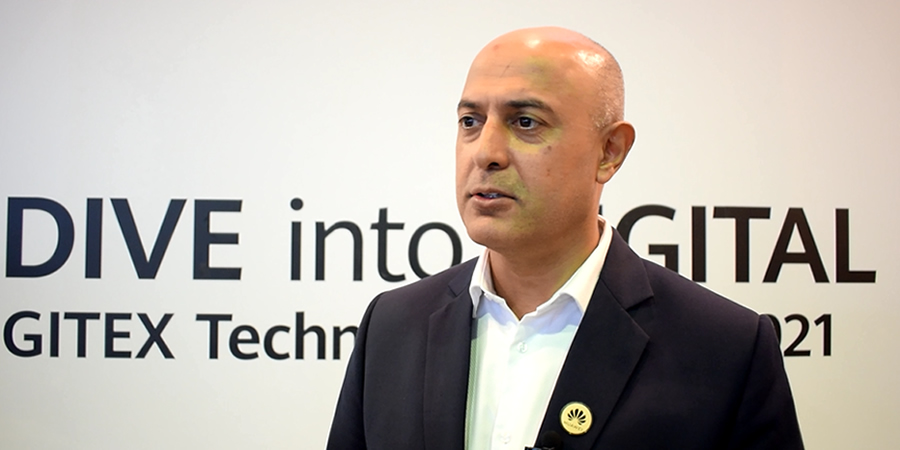In an exclusive one-on-one, Telecom Review caught up with Safder Nazir, senior vice president of digital industries strategy, Huawei Middle East during GITEX, who shared his insights about his company’s role in pushing the digital drive across industries.
You have been a regular speaker at GITEX events, what is the specialty of this year's event from Huawei's digital industries stand point?
It’s great to be back at GITEX. It’s good to see people in person again in such big numbers. Regarding what’s different this year, it’s really about sustainability and how we have got to be able to address sustainability within the region. The average per capita carbon footprint of the Middle East region is 3 and a half times that of the world average. If we don’t address these topics now, even though some countries are signed up to the sustainable developmental goals, we’re going to have problems down the road. Countries like UAE, Saudi Arabia or even Pakistan have put very strong initiatives and targets in place to be able to turn this around and reach net-zero by 2050.
Please elaborate for us the concept of 'cognitive cities' and ‘shared economies’.
About 15 to 20 years ago, we used to hear about digital cities. The technology trend at that time was broadband, so we had 3G come out and lot of services started to happen online such as E-government, E-services, etc. Then, we started talking about smart cities and the technology transition that happened was IoT. IoT’s mass adoption has allowed smart cites to really take off. We hear about cognitive cities where the technology trend is artificial intelligence (AI). The use of AI, with IoT and connectivity is what allows us to be able to deliver cognitive cities of the future.
How is Huawei helping government entities, corporate organizations and industries leverage big data using AI to transform the digital economy?
When industries start their digital transformation journey, they start by digitizing legacy infrastructure that could be scanning things and making things electronic by shifting from analog to digital. Once we start using technology to change processes, that’s when digital transformation takes place. A lot of that transformation is based on data. For example, shifting from analog to digital will bring us a lot of data and that’s how we can define big data, through volume, velocity and voracity to make sense out of that and use it. For instance, the Huawei’s rain forest guardian uses AI and data in the cloud to be able to help protect the environment. It takes data (sound) from IoT devices, transmits them to the cloud and uses algorithms in the cloud on that data. Doing so helps in finding out about illegal activities such as chopping down of trees or being able to listen to different types of animals that might be in danger.
How will emerging technologies such as extended virtual reality and augmented reality shape the future of smart cities and industries?
One of the things that have held back the adoption of emerging technologies is latency. With 5G, the latency has been reduced which means you don’t need to be tethered anymore. When we talk about mixed reality, it is everything from gamification and education to maintenance and operation services and different industries can start to use that technology. For example, 2D text books that we used as children or plastic models were as far as we could go when it came to learning. But using the latest technologies now, children can really see and understand the reality a lot better and bring down the time to gain the knowledge and reduce the knowledge gap. Even for part assembling at home, if you could see it in 3D model, you can see it far more realistically and be able to resolve issues a lot faster. Huawei is bringing digital into every industry. As part of our mission, the breadth of technology that Huawei brings is unprecedented. From digital power and being able to use technology to lower carbon footprint and bringing that to cloud computing and multiple use cases for all types of industries, including mixed reality, it is really what we are about and we look forward to helping all types of industries on their digital transformation journey.










